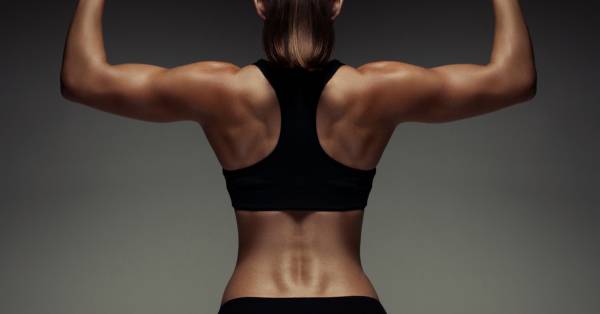<strong”>As an orthopedic surgeon, I am excited to share with you some important basic exercises that can help prevent shoulder injury. Strengthening the rotator cuff is imperative for any athlete in any sport. These muscles around the shoulder are extremely important for stabilizing the shoulder joint, which can ultimately assist in preventing shoulder injuries.
I will share several specific exercises with you – all of which I recommend as an orthopedic surgeon and physician. I suggest you do the exercises three times per week, for three sets, each of which should include ten or fifteen repetitions.
Also, please note that heavy weight does not have to be used, as it is vital you control the weight while performing these exercises.
Understanding the Muscles of the Rotator Cuff
The rotator cuff is comprised of four muscles:
- Infraspinatus
- Supraspinatus
- Subscapularis
- Teres minor
All of these muscles give stability to the shoulder and each has a specific, unique attachment to the upper humerus, or arm. Each muscle works in conjunction with the others to provide the harmony of motion essential for maintaining the muscular stability of the shoulders and preventing injuries such as rotator cuff tendonitis or rotator cuff tears. These muscles work in union with the labrum to keep the shoulder in the best positions kinematically when exercising or participating in sports.
“These muscles around the shoulder are extremely important for stabilizing the shoulder joint, which can ultimately assist in preventing shoulder injuries.”
The anatomy of the rotator cuff muscles is worth reviewing and understanding. These four muscles have specific attachments, origins and innervations. Knowing their origins and attachments gives us better insight into how these muscles perform.
Supraspinatus Muscle
The supraspinatus muscle originates on the supraspinatus fossa of the scapula. This particular muscle inserts on the highest portion of the facet of the greater tubercle of the humerus. The supracapular nerve innervates this muscle. This muscle essentially allows for lateral rotation of the humerus and initiates the abduction of the arm.
RELATED: The Best Method for Talking to Your Doctor About Shoulder Injury
Infraspinatus Muscle
This muscle originates on the infraspinatus fossa of the posterior aspect of the scapula. The muscle inserts on the middle aspect of the greater tubercle of the humerus and is innervated by the suprascapular nerve. This muscle serves to laterally rotate the humerus.
Subscapularis Muscle
The subscapularis muscle originates on the subscapular fossa of the scapula and inserts on the lesser tubercle of the scapula. This particular muscle is innervated by the upper and lower subscapular nerves and serves to medially rotate the humerus.
RELATED: A Quick Look at Preventing and Treating Shoulder Instability
Teres Minor Muscle
Lastly, the teres minor muscle originates on the upper aspect of the lateral border of the scapula and inserts on the lower part of the greater tubercle of the humerus. The teres minor muscle is innervated by the axillary nerve and serves to adduct and rotate the humerus laterally.
Exercises to Prevent Common Shoulder Injuries
Understanding the basic function of the rotator cuff muscles can give you insights about how we activate and use them. This will also afford you an opportunity to learn and practice exercises that can prevent strain and/or tear of the rotator cuff muscles.
“These injuries can be devastating to a person’s well being and athletic performance, and can even make general day-to-day activities quite difficult.”
Common injuries associated with the shoulder that I evaluate in my orthopedic practice include the following:
- Rotator Cuff Tendonitis
- Rotator Cuff Bursitis
- Rotator Cuff Tears
- Labral Tears
- Shoulder Contusion
- Glenohumeral Ligament Strains and Tears
Rotator cuff injuries can affect individuals across a multitude of lifestyles and fitness levels. These injuries can be devastating to a person’s well being and athletic performance, and can even make general day-to-day activities quite difficult.

These injuries can be caused by over-exercising, lack of exercise, improper form, heavy and improperly controlled weights, or accidents in the gym while using weights. I also evaluate shoulder injuries in patients who attempt to use heavy weights for overhead military presses and in patients who attempt to do complex exercises they see in intense exercise and fitness DVDs.
Here are the exercises I highly recommend as a physician and as an athlete that will assist you in strengthening your rotator cuff and potentially preventing injury:
- Internal and External Rotation Dumbbell Curls.
- Abduction Shoulder Dumbbell curls.
- Forward Flexion Shoulder Raises/Forward Raises.
- Pendulum Exercises: Circle & Reverse Circles.
- Pendulum Exercises: Crosses.
All of these exercises are demonstrated in the video below, so use this as a visual reference to ensure proper form and technique. Do not use heavy weight for these types of exercises.
Again, I recommend three sets of each exercise for ten to fifteen repetitions, three times a week.The goal of these preventive shoulder exercises is to assist you in avoiding shoulder injuries and to elevate the level of your athletic performance and safety prowess. So remember to go at your own pace, so that all exercises can be executed with quality form. This is essential to the health of your shoulder.
Learning more about your shoulders:
Understanding the Shoulder and Bulletproofing it from Injury






